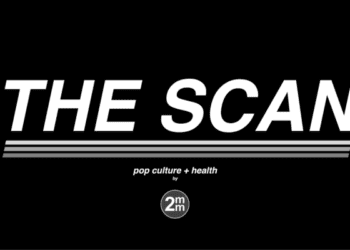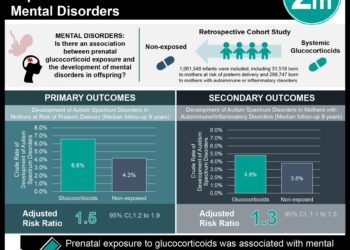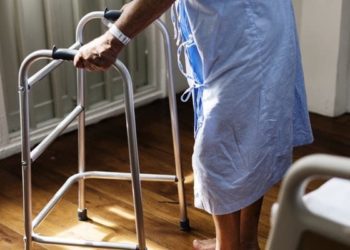Wellness Check: Exercise
1. In this systematic review and meta-analysis, it was found that higher intensities and lower frequencies of resistance training best facilitated recovery in the management of tendinopathy.
2. However, there was limited and inconsistent evidence regarding the role of resistance exercise volume on tendinopathy management.
Evidence Rating Level: 1 (Excellent)
Tendinopathy is a complicated chronic illness that involves the breakdown of tendons and is quite painful for affected patients. Exercise therapy is an important component of managing tendinopathy, particularly resistance training. Currently, there is a lack of studies investigating the dose-response relationship of resistance training in these patients. As a result, the objective of the present study was to investigate resistance training dose components, including intensity, volume, and frequency, in the management of tendinopathy.
Of 12,379 identified records, 110 (n=3953 participants) studies were included from various databases from 1998-2022. Studies were included if they evaluated the effects of a minimum of 2 of the 3 dose components for resistance exercise on tendinopathy management. Studies were excluded if patients experienced full thickness or large tendon tears or if the studies were conducted in countries that were not ranked ‘very high’ on the Human Development Index list. The review was performed using PRISMA guidelines. Statistical analysis was performed using meta-regression. The risk of bias was assessed using the Cochrane risk of bias (RoB) tool. The primary outcome was tendinopathy improvement.
The results demonstrated that there were greater effect sizes for higher intensity exercise regimens and those that used external loads, rather than body mass only. Additionally, it was found that frequencies of less than once per day were more likely to enhance recovery than more frequent regimens. However, the impact of exercise volume (sets and repetitions) did not produce consistent results. Despite these findings, the study was limited by lower rates of reporting for exercise intensity in comparison to volume and frequency, which may have influenced the results. Nonetheless, the present study added additional understanding of the role of resistance training in tendinopathy management.
Daily sitting time may be associated with knee pain in adults with type 2 diabetes mellitus
1. In this cross-sectional study, increased daily sitting time was significantly associated with higher odds of knee pain, but not neck, shoulder, or lower back pain, in patients with type 2 diabetes mellitus (T2DM).
2. However, there was no significant association between sitting time and musculoskeletal pain (MSP) in patients with prediabetes or normal glucose metabolism.
Evidence Rating Level: 2 (Good)
Patients with type 2 diabetes mellitus (T2DM) may experience musculoskeletal pain (MSP) as a comorbidity of their illness. Although there have been associations between increases in MSP with higher volumes of sitting in some cohort studies, this association has not been extensively studied in patients with T2DM. As a result, the objective of the present study was to investigate the role of daily sitting time on MSP in middle-aged and older adult patients with T2DM, compared to those with prediabetes and normal glucose metabolism.
In this cross-sectional study, 2827 (n=658 with T2DM) participants from The Maastricht Study were included. Participants from the initial cohort who completed a validated self-reported questionnaire on musculoskeletal health and who had information on siting time, physical activity, and T2DM status available were included in the analysis. Participants were excluded if they were diagnosed with type 1 diabetes. Sitting time was measured using the activPAL3 device for 8 consecutive days. Participants were included in the analysis if they had at least one valid day of device wear time. Statistical analysis was performed using progressively adjusted multiple logistic regressions modeled for each MSP outcome. The primary outcome was the impact of daily sitting time on MSP outcomes.
The results demonstrated that in patients with T2DM, increased daily sitting time was linearly and significantly associated with higher odds of knee pain, but not neck, shoulder, or lower back pain. Conversely, in patients without T2DM (including those with prediabetes), there was no significant association between sitting time and MSP. Despite these results, the study was limited by the omission of occupational physical activity, which may have influenced the results of the analysis. Nonetheless, the present study provided initial evidence regarding the association between MSP and daily sitting time in patients with T2DM.
Physical activity improves mental well-being after traumatic events
1. In this systematic review, physical activity levels were correlated with improvements in mental well-being and various mental health symptoms after traumatic events.
2. Conversely, those who did not engage in physical activity had worsened mental health symptoms and experienced more relational problems following traumatic events.
Evidence Rating Level: 1 (Excellent)
Recent studies have suggested that physical activity may have a unique role in maintaining both physical and mental health in several mental health disorders. Studies have also shown that those who experience traumatic events are at higher risk for mental health problems. However, the potential benefits of physical activity in those who have experienced traumatic events has not yet been well established. As a result, the objective of the present systematic review was to synthesize the available evidence and determine the nature of the relationship between physical activity and mental health in those who have experienced traumatic events.
Of 947 identified records, 33 studies (n=12 natural disasters) were included from various databases from 2011-2020. Studies were included if they investigated the effects of physical activity on the mental health of children and adults who experienced various traumatic events. Studies were excluded if the full text was unavailable or if the study lacked scientific methodology. The review was performed using PRISMA guidelines. Quality assessment was performed using a structured tool developed by Brooks et al. The primary outcome was the impact of physical activity on mental health outcomes.
The results demonstrated that increased physical activity was associated with lower levels of stress, depression, and other psychological symptoms in patients who experienced traumatic events. Physical activity was also associated with improved sleep quality and quality of life in this population. Those who did not engage in physical activity had worsened mood and increased relationship problems. Despite these results, the study was limited by the heterogeneity of the types of traumatic events that were experienced, which may limit comparisons. Nonetheless, the present study suggested that physical activity may have overall benefits for individual mental health after traumatic events.
Physical activity may improve the reproductive function in women with polycystic ovarian syndrome
1. In this systematic review and meta-analysis, physical activity improved the reproductive outcomes of women with polycystic ovarian syndrome (PCOS), whether used alone or in combination with other interventions.
2. In addition, physical activity was associated with improvements in psychological factors in women with PCOS.
Evidence Rating Level: 1 (Excellent)
Issues with fertility are common and distressing for women diagnosed with polycystic ovarian syndrome (PCOS). Physical activity is often recommended to PCOS patients to maintain a healthy body weight and improve insulin sensitivity. However, the role of exercise in improving women’s reproductive functions has not yet been established. As a result, the objective of the present study was to review the literature and determine the effects of physical activity on reproductive function in women with PCOS.
Of 334 identified records, 7 (age range =13-45 years) studies were included from various databases from January 2010-December 2022. Studies were included if they were randomized controlled trials that investigated physical activity interventions on reproductive function in women with PCOS aged 13 to 45 years. Gray literature, unpublished manuscripts, and publications without primary data were excluded. The review was performed using PRISMA guidelines. The quality of the studies was assessed using the Cochrane Effective Practice and Organization of Care Risk of Bias Tool. The primary outcome was improvements in reproductive functions.
The results demonstrated that physical activity helped to improve various reproductive functions, including menstrual frequency, establishing hormonal balance (such as anti-mullerian hormone), and reducing hyperandrogenism. The improvement in reproductive function was observed for a maximum of 6 months. Furthermore, physical activity improved psychological factors in patients, and was associated with a reduction in anxiety and depression. Despite these results, the study was limited by the finite number of studies investigating physical activity and PCOS, which may have affected the results. Nonetheless, the present study provided a further understanding of the benefits of physical exercise in women with PCOS.
Image: PD
©2023 2 Minute Medicine, Inc. All rights reserved. No works may be reproduced without expressed written consent from 2 Minute Medicine, Inc. Inquire about licensing here. No article should be construed as medical advice and is not intended as such by the authors or by 2 Minute Medicine, Inc.







